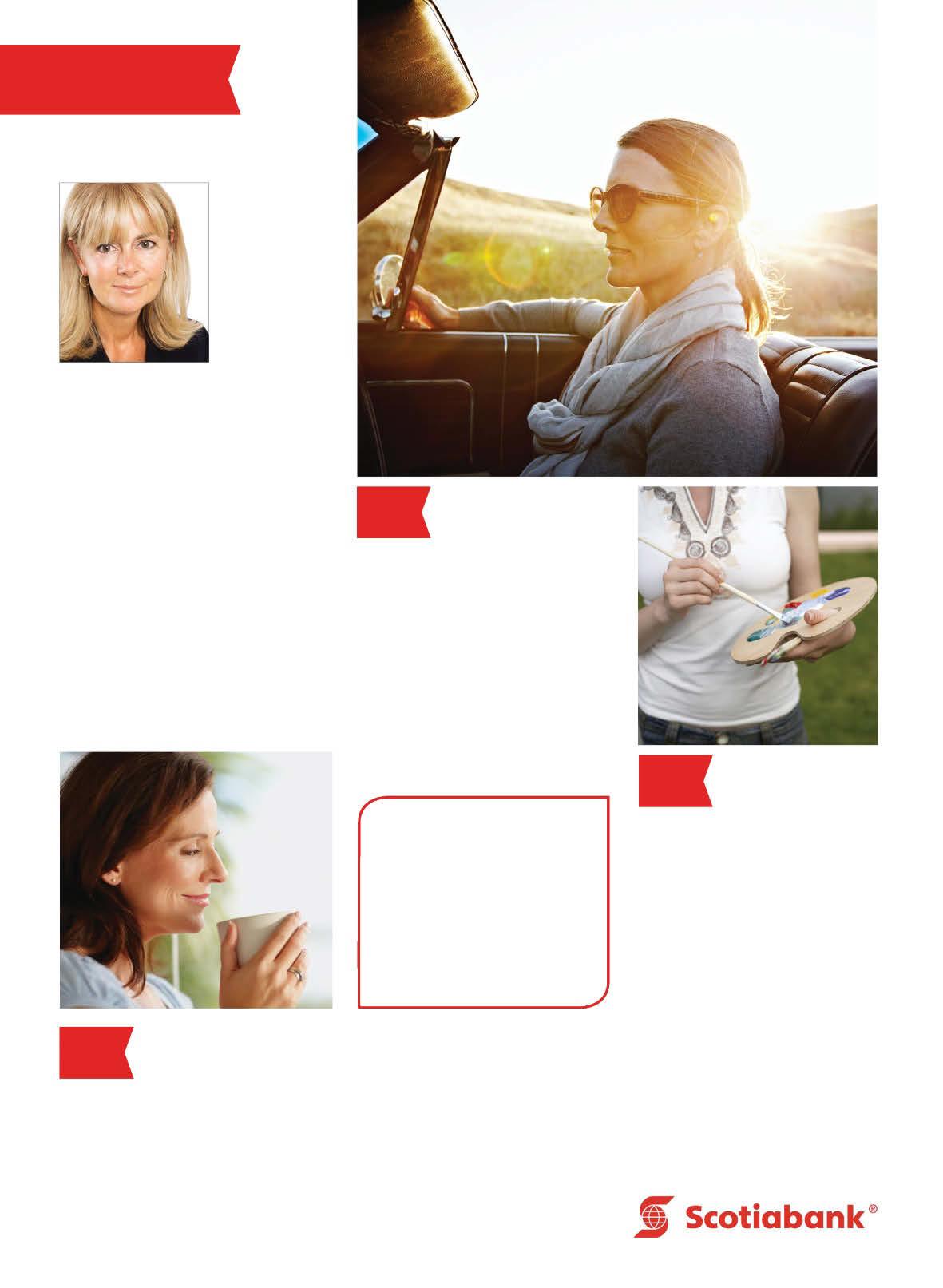
8 minute read
SAVING LIVES IN THEIR SPARE TIME
from CL - Jan 2015
The author’s husband, Ian Marquette, and their children, Carmelo and Perdida, who will likely be the next generation of volunteer firefighters.
When a call comes in, Upper Stewiacke’s volunteer firefighters are ready to risk everything for their neighbours.
Advertisement
BY LOLA AUGUSTINE BROWN PHOTOGRAPHY BY STACEY VAN BERKEL
HEN MY HUSBAND’S PAGER GOES OFF in the middle of the night, the house is thrust into panic mode. I wake, the dogs bark and my husband jumps up, grabs his car keys and is gone. As I nervously wait to hear what’s going on, he drives to the fire hall, dons his gear and, with a crew of friends and neighbours, hurtles down the country roads in a fire truck to wherever the fire, accident or medical emergency is. When you live in the sticks like we do, the volunteer fire department is first to show up.
In 2014, the volunteer fire department in Upper Stewiacke, a village of 1,400 in rural Nova Scotia, responded to 47 calls, including some in neighbouring communities. Its firefighters have attended to chimney, grass and structure fires; been first on scene for a possible heart attack; and, when cars have flipped into ditches, cut motorists and passengers from the wreckage. When that pager goes off, day or night, on major holidays or during family celebrations, these citizens, many with day jobs and children, drop what they’re doing and go. And anyone related to a firefighter worries that someone we know is hurt or that the ones we love will be hurt trying to help others.
Being a volunteer firefighter is a commitment. In addition to front-line volunteers, there are members who help with fundraising and traffic control and act as truck operators. “When people come to me and say they want to become a ‘firefighter,’ I tell them there’s extensive training,” says fire Chief Randy O’Connell. Volunteers join with a three-month probation period. If they want to take the Level 1 firefighter course offered by the county, the department pays the expenses. While the training is the same as for their big-city counterparts, volunteer firefighters don’t get paid for their

Some members of the Upper Stewiacke Volunteer Fire Department: Top row, from left: Alan Hamilton, Jake Keddy and Chris MacKenzie. Bottom row, from left: Ashley Keddy, Ron Ellis (who just celebrated 65 years with the department), Justin Hamilton, Ian Marquette, Phyllis Wright-Roberts, Randy O’Connell, Arlen Kennedy, Lawrence Dunlap and JT Kennedy.
Marquette, joined the brihow much fun it would 40-hour weeks at the fire hall, all while running a beef farm and bringing up three daughters, too. It’s hard work, but he has never regretted taking on the role, even after the most difficult calls, especially those that involve children.
“As a department, there are calls that cover many different levels of emergency; some are small and some are tragic. We sometimes need counselling and debriefing to get through,” he says. But that is the job. “When the pager goes off, we have to move quickly and plan what course of action needs to be taken in order to do what we are there to do.”
Sometimes those calls are responding to their own members’ emergencies. Robin Cleveland, a
Randy O’Connell longtime member and local dairy has been with the department for 25 years. farmer, says those are often the most difficult, “because they’re one
His daughter is of your own. You have to put emoalso a member. tions aside and tend to the issue.” Upper Stewiacke’s Volunteer Fire Department was But even the worst situation can bring out the best response, says founded in 1946. Robin. He recalls fighting a barn blaze at one of the firefighter’s farms that destroyed a winter’s worth of hay as well as the structure. The community responded by donating hay and helping rebuild the barn. In addition to the department’s efforts—they qualify for a yearly $500 junior firefighters who train but don’t tax credit and a free set of licence plates. attend calls. Rebecca Drenth joined the
Becoming part of the community juniors five years ago at age 14 after her was the main reason my husband, Ian family moved to the area. She says it
gade. We moved to Upper Stewiacke wanting to con- “Becoming a volunteer nect with our new neighbours and feel like we were firefighter gave our whole contributing, too. The fire department helped ease our integration into the family a social life, which has helped make us truly village community. “When I joined, I had no idea feel at home here.” 45 members, there are seven be or that I’d meet such a good bunch of helped with her transition to her new people,” says Ian. “Becoming a volunteer village. “When I graduate university, I’ll firefighter gave our whole family a social be coming back to join the regular fire life, which has helped make us truly feel department because I love doing this,” at home here.” says Rebecca. “I love being a part of this
Randy was 22 when he joined the strong community.” department in 1990, and he became fire Carrie Creelman, a registered nurse chief nine years ago. Randy has put in and one of the department’s medical first responders, says she can’t remember a time when her family wasn’t part of the brigade. Her dad, Stephen Keddy, started the junior brigade, and her twin sister and two brothers are also volunteer firefighters. “When Dad was looking after us and there was a call, he’d drive to wherever it was, and we four kids would sit in the car waiting, with one of the firefighters coming over to check on us every so often,” she says.
For most families, being part of the brigade is a family affair. Phyllis WrightRoberts, a home support provider, mom and grandmother, joined the department to support the community and her husband and son, both firefighters. “I was spending a lot of my time there anyway,” says Phyllis, who uses a week of her vacation time to organize the annual antique tractor pull, one of the department’s biggest fundraisers.
In Upper Stewiacke, the fire hall is where everything happens, from the annual pancake breakfast and maple syrup festival to the firefighters award night. The firemen’s parade, held each August, is the highlight of our social calendar. After the parade, there’s a barbecue and games for the kids in the field next to the fire hall. At night, adults of all ages attend the dance that features a band and a DJ who play everything from The Rankin Family to AC/DC. As the only licensed bar in a 40-kilometre radius, the fire hall is where all our local events—village suppers and weddings, for example—take place. The hall is where Carrie held her bridal shower and wedding in 2013, when she married another volunteer firefighter, Roddy. (“He joined the department because of me,” she says.)
The fire hall is the heart of our community, and our firefighters make sure that Upper Stewiacke is a safer place to call home. Without them, there are people who would have lost their lives, homes or businesses. Like the 90 percent of communities across Canada that are protected by volunteer fire departments, we are fortunate to have so many dedicated locals who are willing to risk everything for friends and neighbours.
Randy puts it quite simply: “Giving back to the community that helped raise us, helping neighbours, friends and family in times of crisis, is what we’re there for.”

RETIRE YOUR WAY
20+ YEARS TO RETIREMENT
Personal Finance Expert
DEIRDRE MCMURDY
An inspired retirement
Canadians want a retirement that’s personalized for them. The majority of boomers see retirement as the beginning of a new chapter in their life, not just the end of one. In this three-part series personal finance expert Deirdre McMurdy has advice on how to create a plan that’s right for you.
DEIRDRE’S TIP
Figure out how much
you need. Every journey starts with a destination. If you have a clear sense of where you want to go, it will help to frame the decisions and choices you make along the way. Your destination will depend on the lifestyle you want—and no, you don’t need that giant sum of money to retire! Developing a personalized map of your financial future is an important first step—and never be afraid to ask for directions!

DEIRDRE’S TIP
68%
OF BOOMERS SEE MANY STAGES TO RETIREMENT AS OPPOSED TO JUST ONE
(Scotiabank Customer Knowledge & Insights, January 2014 Investment Poll)
Talk to someone. Speak with your family and friends about their retirement plans. Don’t be afraid to ask questions. Here are some suggestions: How did they initially figure out how much to save? When did they start saving and what tools did they use? Where did they get their information or advice? Were there lessons they learned along the way? These questions will help you to frame your own retirement goals. Then when you’re ready, speak with a professional advisor. DEIRDRE’S TIP
What does your retirement look like?
Retirement isn’t all about aspirational travel or endless golf games. Most retirees just want enough income and free time to do the things that matter most—like pursuing hobbies or spending time with the grandkids. When creating your retirement plan, look at your current interests and activities. How you spend your time in retirement should be an extension of how you’ve always lived your life. We all have a list of all the things we want to do and how we’d spend that perfect day. Chances are that perfect day will reflect the interests, activities and priorities you’ve always valued.
A customized retirement plan starts with advice tailored to your goals. Talk with a Scotiabank® Advisor and get your personalized plan.

www.scotiabank.com/tailoredadvice











